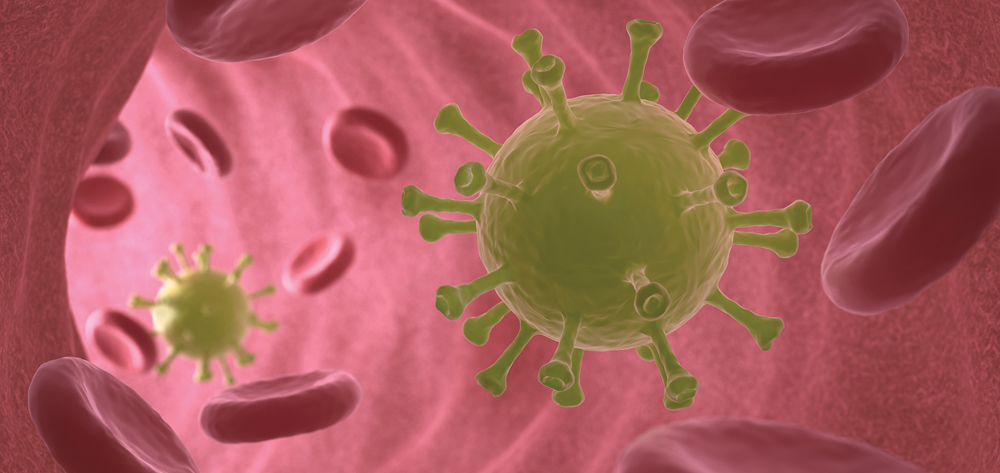Healthcare-acquired infections (HAIs) remain a significant problem for most hospitals, despite a decade of focused improvement efforts using evidence-based guidelines. One type of HAI, central-line associated bloodstream infection (CLABSI), carries a mortality of 12% to 25%. CLABSIs also can be costly for hospitals, extending patient stays. The Centers for Medicare & Medicaid Services no longer reimburses hospitals for the cost of treating these infections.
Fortunately, we’ve made progress against CLABSIs. The Centers for Disease Control and Prevention (CDC) reports a 58% reduction in CLABSIs from 2001 to 2009. That’s an impressive decrease—but we still have room to improve. In 2009, about 18,000 intensive care unit patients were diagnosed with CLABSIs; an additional 23,000 cases occurred in acute-care unit patients and 37,000 in outpatient hemodialysis patients.
This article discusses basic practice bundles that have helped us achieve our current success and highlights several interventions beyond the bundles, which may further decrease CLABSIs.
In 2005, the Institute for Healthcare Improvement (IHI) launched the 100,000 Lives Campaign, which sought to reduce HAI morbidity and mortality through the use of bundled interventions. In particular, IHI promoted a central-line insertion bundle to reduce CLABSIs. Healthcare organizations that implemented the IHI bundle reduced CLABSIs significantly, as shown by the CDC’s national estimates. The concept and content of bundles now goes beyond those initially recommended by IHI. CLABSI bundles can be divided into three categories—insertion, maintenance, and patency.
Central-line insertion bundle
IHI’s insertion-bundle recommendations include proper hand hygiene, maximal barrier precautions, chlorhexidine skin antisepsis, optimal catheter site selection, and daily assessment for removal of unnecessary lines. The following practices related to central-line insertion go beyond the basic bundle and are supported by evidence:
- ultrasound-guided peripheral I.V. placement by registered nurses to reduce the need for central line access
- antimicrobial- or antiseptic-coated catheter use if the central line will stay in place beyond 6 days
- midline catheter as an alternative to a central line if therapy is likely to exceed 6 days
- ultrasound guidance for central-line placement to avoid multiple placement attempts
- dedicated advanced practice nurse teams for central-line insertion.
Central-line maintenance bundle
Most healthcare facilities use a maintenance bundle for ongoing care of patients with central lines. Typically, the bundle includes many of the recommendations in the CDC’s Guidelines for the Prevention of Intravascular Catheter-Related Infections or other professional society guidelines.
Basic maintenance bundle elements focus on proper hand hygiene, catheter disinfection before central-line access, and aseptic technique for site care, tubing, and dressing changes. Evidence-based interventions related to central-line maintenance that go beyond the basic bundle include:
- disinfectant caps that cover needleless connectors and injectable ports on tubing
- chlorhexidine-impregnated transparent dressings or sponges
- sutureless securement devices to stabilize catheters
- daily bathing with chlorhexidine alone or combined with mupirocin ointment to the nares.
Central-line patency bundle
Studies link catheter thrombosis with development of bloodstream infections. Healthcare facilities typically have policies and procedures addressing catheter patency but may not consider these part of a bundle.
Components of a patency bundle include such items as catheter-flushing technique, optimal flush solutions, anti-reflux devices, and interventions for managing catheter occlusions. Here are some evidence-based practices related to central-line patency:
- needleless connectors with neutral/zero fluid displacement during access and de-access
- prophylactic antimicrobial lock solutions instead of heparin or saline solution
- standing orders for managing catheter occlusions.
Beyond bundles
Nurses are uniquely positioned to influence CLABSI reduction. As keen observers during catheter insertion, we should feel empowered to stop the procedure if we see practice lapses. Also, we are primarily responsible for care and maintenance of all central lines, and are the main advocates for removal when these lines are no longer necessary. In addition, we teach patients and families how to care for their lines when they need them at home. For these reasons, the American Nurses Association and National Quality Forum deemed CLABSI one of many nurse-sensitive indicators, meaning patient outcomes (such as CLABSI rates) improve with more nurses or a higher quality of nursing care.
Implementing research-based practice bundles has helped us make great strides. We must continue to partner with other clinicians, infection control practitioners, hospital administrators, and patients to develop and refine additional prevention strategies—and, eventually, to make the goal of zero HAIs a reality.
Cass Piper Sandoval is a clinical nurse specialist in adult critical care at the University of California San Francisco Medical Center.
Selected references
Centers for Disease Control and Prevention. Vital signs: central line-associated blood stream infections – United States, 2001, 2008, 2009. MMWR Morb Mortal Wkly Rep. 2011;60(8):243-8.
How-to Guide: Prevent Central Line-Associated Bloodstream Infections. Cambridge, MA: Institute for Healthcare Improvement; 2012. ihi.org/resources/pages/tools/howtoguidepreventcentrallineassociated
bloodstreaminfection.aspx
O’Grady NP, Alexander M, Burns LA, et al.; Healthcare Infection Control Practices Advisory Committee. Guidelines for the prevention of intravascular catheter-related infections, 2011. Clin Infect Dis. 2011;52(9): e162-e193. cdc.gov/hicpac/pdf/guidelines/bsi-guidelines-2011.pdf


















